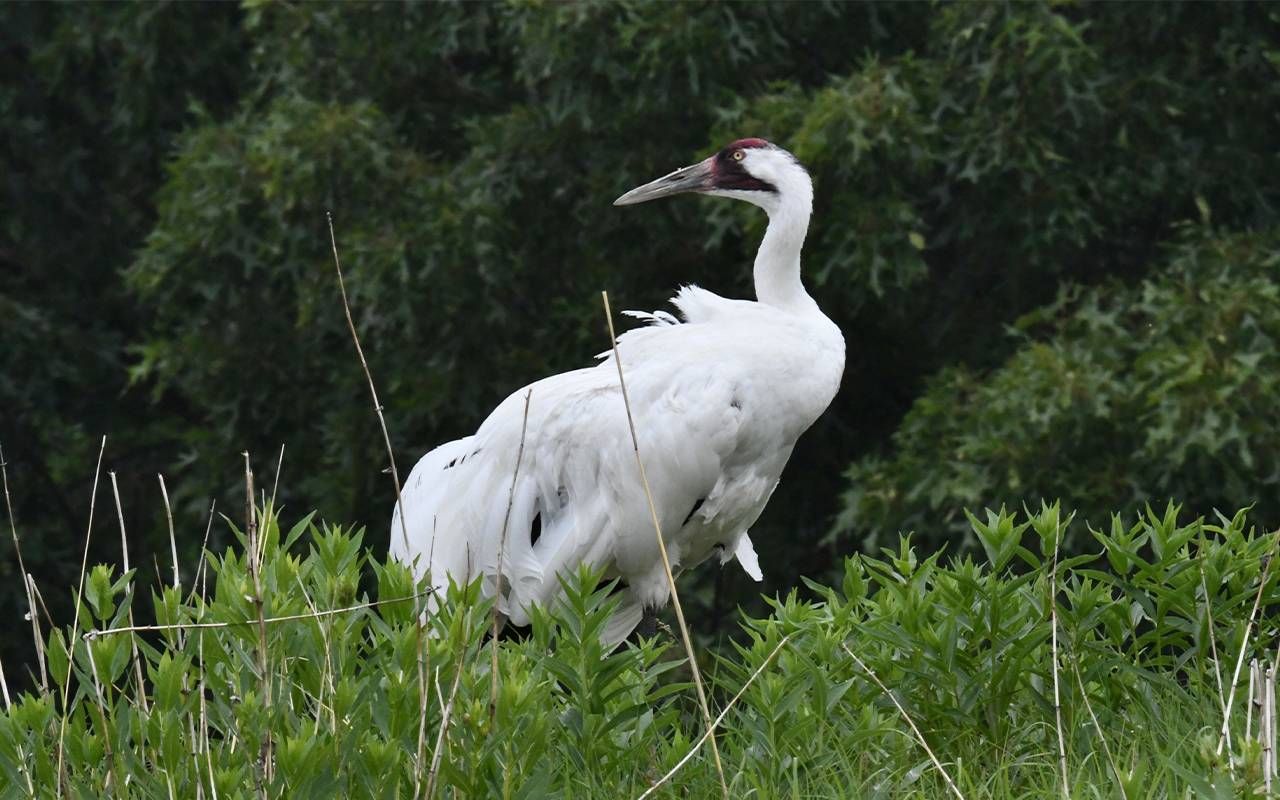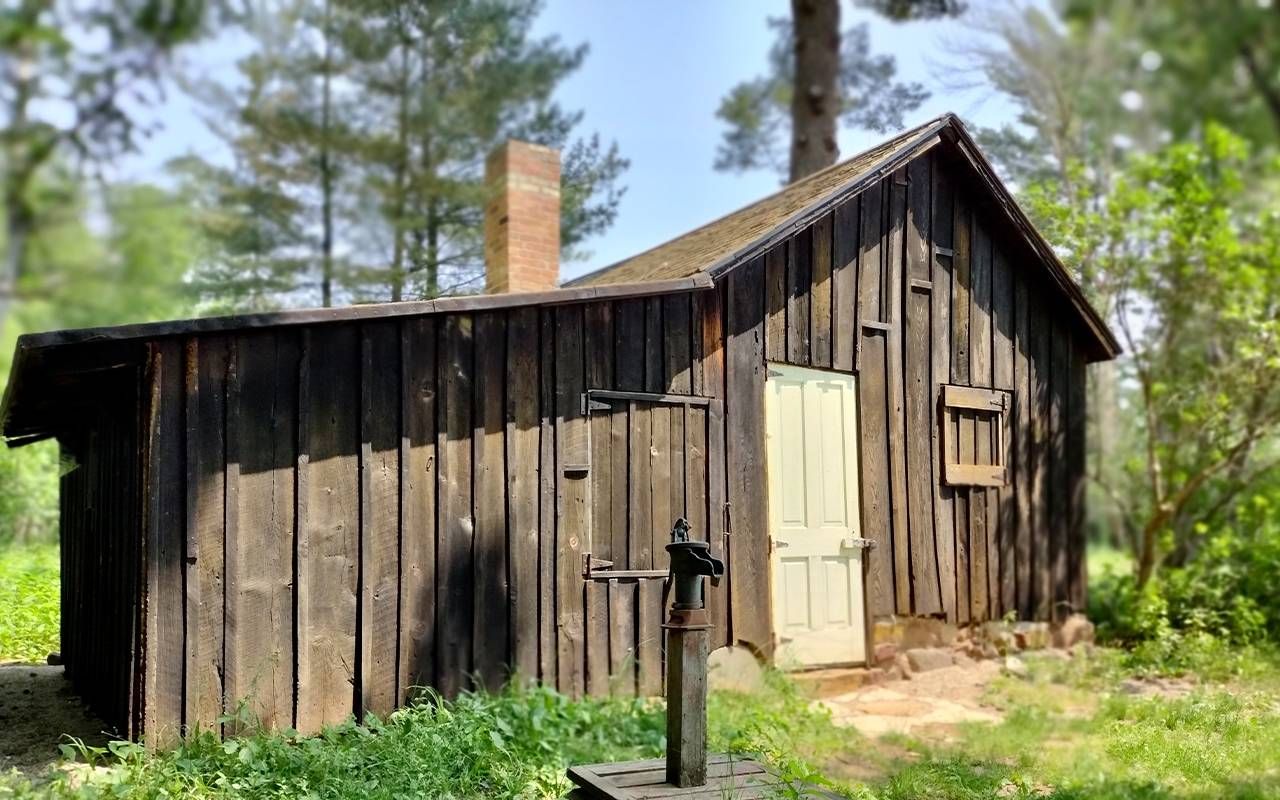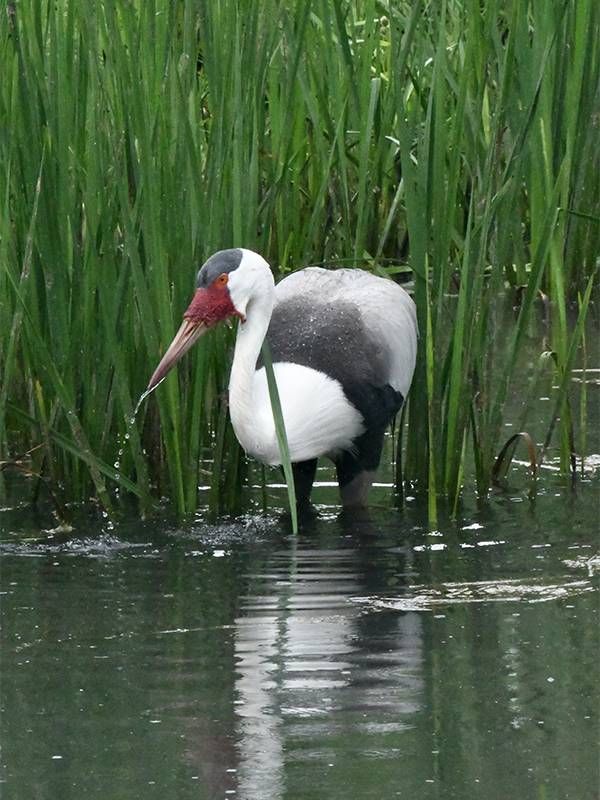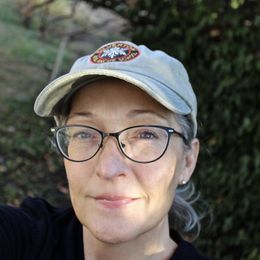Conservation Destination: Baraboo, Wisconsin
The International Crane Foundation (ICF) is dedicated to protecting the graceful crane. Ten of the world's 15 species face extinction.
Rain peppered the small lake where an elegant, gray and white bird stepped slowly among blades of green. Her red mask reflected in the rippling water as she dipped her head to grasp the tiny aquatic animals or plant shoots she fed upon. Her partner stood along the shoreline preening, ignoring the onlookers behind him.
The birds are wattled cranes, a species native to sub-Saharan Africa and designated as vulnerable due to their diminishing habitat. But this pair resides at the International Crane Foundation (ICF) in Baraboo, Wisconsin, a foundation dedicated to protecting cranes across the globe.

I'd decided to visit ICF after being mesmerized by the great sandhill crane migration earlier in the year, and with this new-found curiosity for all crane species, booked a room at the Ugly Biscuits Bed and Breakfast, which sits outside of Baraboo and within a ten-minute drive of ICF.
I'd decided to visit ICF after being mesmerized by the great sandhill crane migration earlier in the year.
I arrived at Ugly Biscuits in the late afternoon and was greeted on the broad front porch by Connie, one of the partners who host the welcoming getaway. Native prairie blanketed one side of the acreage while pine forest back-dropped the scene. An extravagant bird feeder graced the yard, around which various flashes of winged color greedily clustered.
The BnB was my choice because of their close location to ICF, but also because of their vegan/vegetarian menu and conservation practices, which include composting and prairie restoration. I was shown to my room and given a tour; then I walked off my road-weariness on the trails surrounding the property.
I remembered during my walk that ICF recommends calling ahead if visiting during the school year, as viewing spaces get crowded during class tours. So calling, I learned there were two classes scheduled the next morning. Deciding to delay my own visit, I asked my hosts what they recommended I do with my unexpected free time. They quickly suggested the Leopold Foundation, another destination within a few short miles of their doorstep.
The Leopold Center
Aldo Leopold was a forester, educator and conservationist, but he is best remembered as the writer of "A Sand County Almanac," a collection of essays he wrote in a renovated chicken coop — now known as The Shack — on a worn down farm he purchased in Wisconsin's sandhill country in 1935.
Documenting the ecosystems' return to life inspired Leopold to formulate the essays that became his classic "Almanac."
At the time, Leopold and his family lived in Madison, but they spent weekends and holidays devoting their time to restoring the forests and prairie of the farm that sat along the banks of the Wisconsin River. Documenting the ecosystems' return to life inspired Leopold to formulate the essays that became his classic "Almanac." The Shack, the land and the Leopold Center are all open to the public. The place to begin, however, is the Center.
The Leopold Center is not only beautiful, but it echoes the landscape from which it came. Beams of pine and oak — thinned for the health of surrounding forests — frame walls and a fireplace made of stone. Windows provide natural light, one of the many environmentally conscious aspects of the building, which houses an exhibit hall, the Leopold archives and meeting spaces for programs. The exhibit hall and trails around the Center are free, but visitors will need tickets to visit The Shack, which is located a short drive away.
After looking through the photos and artifacts from the lives of the Leopold family, I went outside to explore the grounds. Comprised of forests, prairie and wetlands, the two and a half mile trail system is well maintained and open to the public year around during operating hours. I chose a short prairie-scape that was showy with the yellows and pinks of June wildflowers and passed the Leopold Memorial before making my way back to the car to drive to The Shack.
Guided tours to this historic setting are available, and the squat little building is open to the public on Fridays May through October, but I was there on a Tuesday and had chosen a self-guided tour, so while I did not get to go inside, I had the grounds to myself except for the pair of sandhill cranes —which nest in the region — strutting through the tall grasses near the entrance.

The place was utterly peaceful, and I could understand how it inspired Leopold's essays. Leopold's stately pines shaded much of the land until I followed the sandy trail to the banks of the Wisconsin River. A bench overlooked the broad, rolling water, and birds whose names I did not know sang overhead.
The final essay in Leopold's collection is titled, "The Land Ethic," and it is here he puts into words his belief that humans have too long considered land as a commodity. He felt that if we instead recognized land as an ecological community we were part of, humans would be more inclined to protect it for our own well-being. It is a philosophy that echoed through my trip.
Cranes — A Sight to Behold
The next morning dawned gray as I headed to ICF. Founded in 1973 by Cornell University ornithology students Ron Sauey and George Archibald, ICF's mission is to protect the world's crane species. With offices across the globe, they focus on research, captive breeding and reintroduction, and habitat restoration, often partnering with and involving local populations to ensure the best outcomes for cranes and humans alike.

Arriving at the ICF campus, I passed two gates before finding the Cranes of the World Exhibit. There is a fee to enter, and guided and self-guided tours are available. I chose to wander on my own, finding that signage and staff members answered any questions I had.
I followed the paved loop that leads visitors through the exhibits, stopping first to watch the dramatic black crowned cranes with their pink cheeks and golden crowns. Their grace as they tipped their crowned heads was enviable. I turned then to the wattled cranes hunting near their lake. Just as it began to rain, I slipped into their covered seating area, where I listened to the ratcheting trumpet of cranes fill the air.
Because the ICF campus is in a rural area, the setting is open and natural while the crane exhibits themselves are fenced off enclosures where each species of crane resides in pairs. Art reflecting the culture of a crane's homeland is often displayed near each enclosure, making it a richly diverse space to spend time.
Art reflecting the culture of a crane's homeland is often displayed near each enclosure, making it a richly diverse space to spend time.
There are moments, however, that my heart aches for these birds. The existence of ICF is absolutely necessary: ten of the world's 15 crane species face extinction. Still, it doesn't stop me from wishing that these cranes could raise their great wings and take flight.
I spent the entire day with ICF's cranes, each species different and striking in their way. By late afternoon I'd reached North America's own whooping cranes. Tall and white with a blood-red mask and black-tipped wings, they are a commanding sight to behold, and it cheered me to know that ICF's captive breeding and release program is seeing success. Though they remain endangered, their numbers are increasing.
I sat a long while watching these birds, considering how we nearly let them disappear. Thanks to ICF, I hope we never will again.


